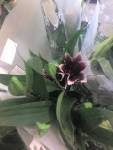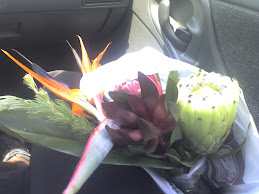Friday, December 21, 2007
Ginkgo Biloba
Ginkko is cultivated and has culinary and medicinal uses. One must be careful with this plant as too much can cause poisoning or problems with blood circulation. Go here to learn more.
Thursday, December 20, 2007
Star Gazer

The Star Gazer belongs in the lilly family. Wikipedia sates that the genus Lilium are herbaceous flowering plants normally growing from bulbs, comprising a genus of about 110 species in the lily family, Liliaceae.
They are important as large showy flowering garden plants, and in literature. Some of the bulbs have been consumed by people. The species in this genus are the true lilies, while other plants with lily in the common name are related to other groups of plants. Go here to learn more about beautiful lilium .
Wednesday, December 19, 2007
Evergreens
 An evergreen plant is a plant that has leaves all year round, according to Wikipedia. This contrasts with deciduous plants, which completely lose all their foliage for part of the year. The tree keeps its leaves all year round though dropping their leaves and instantly re growing them.
An evergreen plant is a plant that has leaves all year round, according to Wikipedia. This contrasts with deciduous plants, which completely lose all their foliage for part of the year. The tree keeps its leaves all year round though dropping their leaves and instantly re growing them. Leaf persistence in evergreen plants may vary from only a few months (with new leaves constantly being grown and old ones shed), up to a maximum of 5 years in Great Basin Bristlecone Pine Pinus longaeva.
Go here to learn more about these lovely plants.
Tuesday, December 18, 2007
Azaleas

Azaleas are flowering shrubs making up part of the genus Rhododendron, according to Wikipedia.
One major difference between azaleas and the rest of the rhododendron family is their size. Another is their flower growth; rhododendrons grow their flowers in stripers, while most azaleas have terminal blooms (one flower per flower stem). However, they have so many stems that during the flowering season they are a solid mass of colour.
Azaleas are recognised by these flowers blooming all at once, in a showy display for a month or two in spring. The exception to this rule is a small group of azaleas which grow their flowers in tight terminal clusters. Go here to learn more about this lovely plant.
Monday, December 17, 2007
Fungus

Have you seen something like this picture in your yard? If so, you were looking at fungus, and they are common. Many of them are known as mushroom.
According to Wikipedia, Fungi are a kingdom of eukaryotic organisms. The fungi are heterotrophic organisms characterized by a chitinous cell wall. Some fungal species also grow as single cells. Sexual and asexual reproduction is commonly via spores, often produced on specialized structures or in fruiting bodies. Some fungal species have lost the ability to form specialized reproductive structures, and propagate solely by vegetative growth.
Yeasts, molds, and mushrooms are examples of fungi. The fungi are a monophyletic group that is phylogenetically clearly distinct from the morphologically similar slime molds (myxomycetes) and water molds (oomycetes). The fungi are more closely related to animals than plants, yet the discipline of biology devoted to the study of fungi, known as mycology, often falls under a branch of botany. Go here to learn more.
Friday, December 14, 2007
Lillys

Lillys are gorgeous flowers. They adorn gardens in the spring and summer. They are perfect for giving away to express one's love or affection. According to Wikipedia, The Liliaceae, or the Lily Family, is a family of monocotyledons in the order Liliales. Plants in this family have linear leaves, mostly with parallel veins, and flower parts in threes.
Many plants in the Liliaceae are important ornamental plants, widely grown for their attractive flowers. Many plants in the family are poisonous if eaten. A floral pattern said to be based on a lily or lily-like flower is used in heraldry; see Fleur-de-lis.
Go here to learn more.
Thursday, December 13, 2007
Freesia

Freesia is a flowering plant. Wikipedia states that it is a genus of 14-16 species of flowering plants in the family Iridaceae, native to Africa. Of the 14 species, 12 are native to Cape Province, South Africa, the remaining two to tropical Africa, one species extending north of the equator to Sudan.
The genus was named in honor of Friedrich Heinrich Theodor Freese (1795-1876), German physician. They are herbaceous plants which grow from a corm 1-2.5 cm diameter, which sends up a tuft of narrow leaves 10-30 cm long, and a sparsely branched stem 10-40 cm tall bearing a few leaves and a loose one-sided spike of fragrant narrowly funnel-shaped flowers. Go here to learn more. To learn more, go here.
